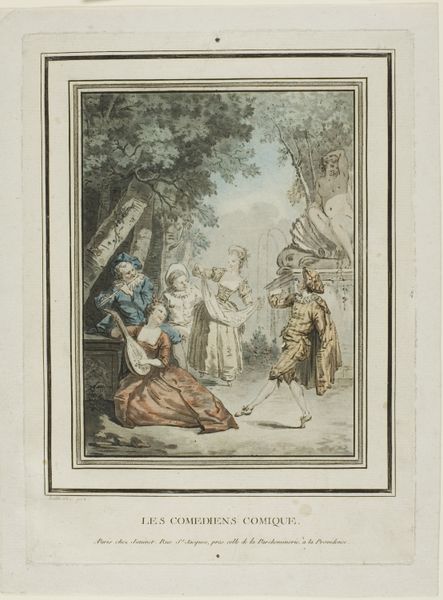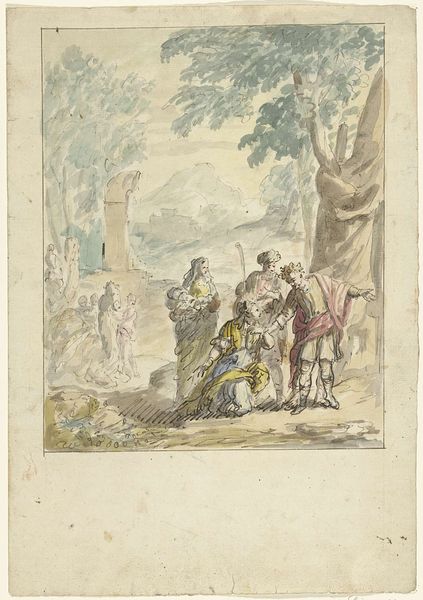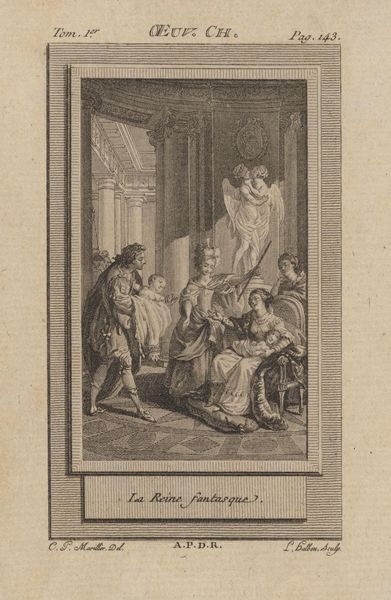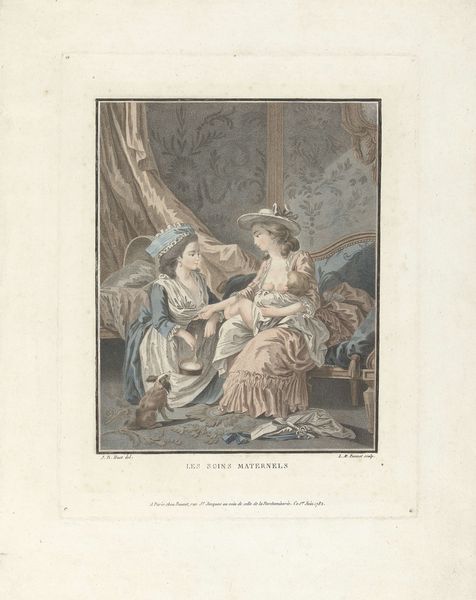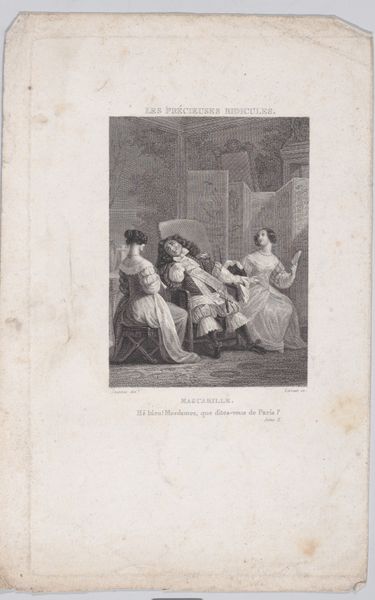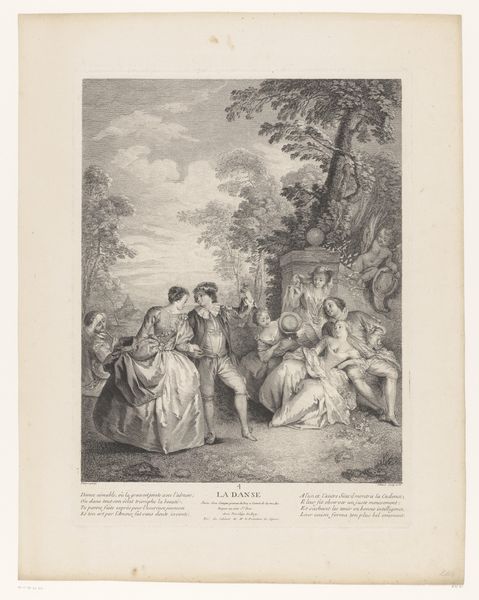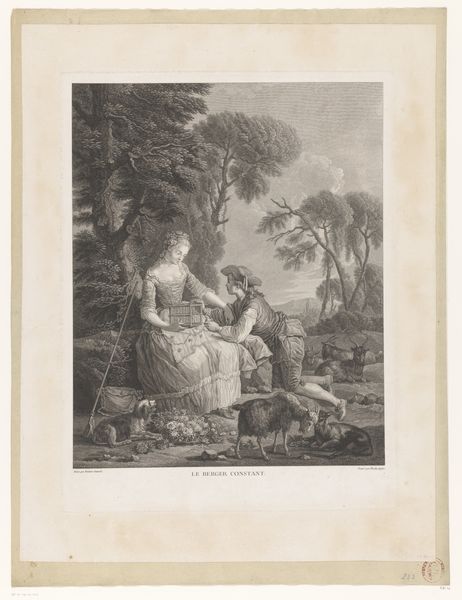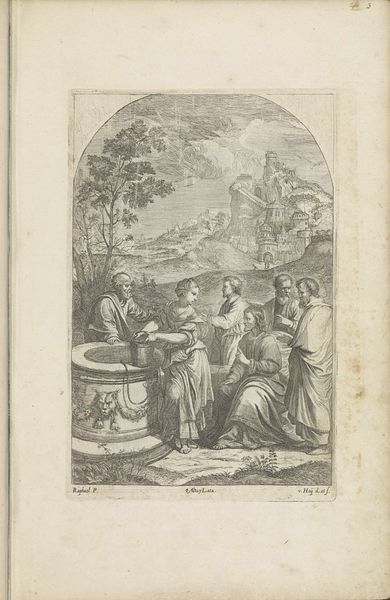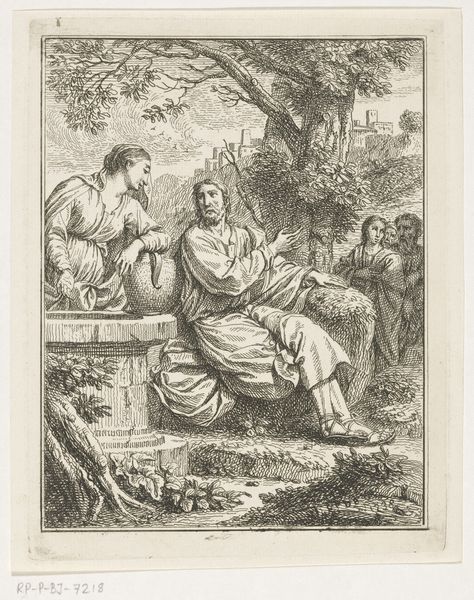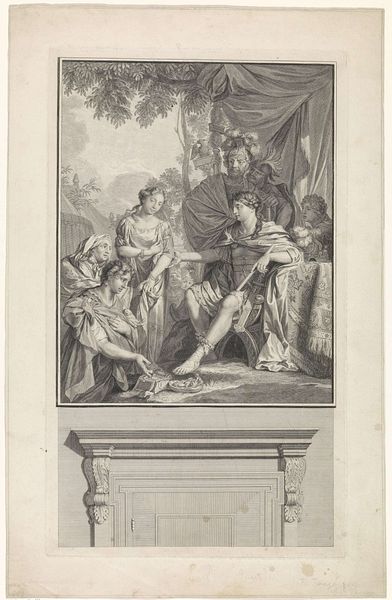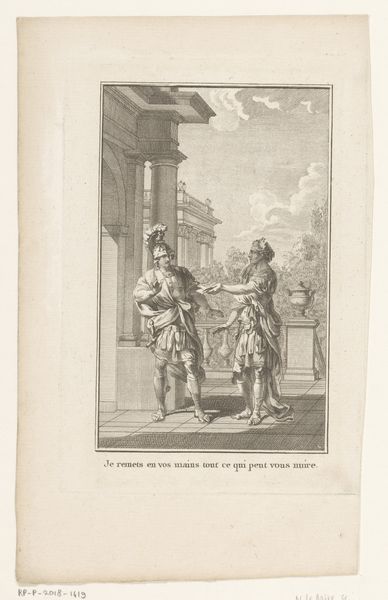
drawing, print, etching, paper
#
portrait
#
drawing
# print
#
etching
#
landscape
#
figuration
#
paper
#
genre-painting
#
watercolor
#
rococo
Dimensions: 217 × 172 mm (image); 262 × 193 mm (plate); 295 × 215 mm (sheet)
Copyright: Public Domain
Curator: Let's turn our attention to a print entitled "The Comic Rendevous." It’s by Jean François Janinet, the date of its creation remains unknown, and we’re fortunate to have it here at the Art Institute of Chicago. What are your initial thoughts? Editor: Well, immediately, I’m struck by this image’s airy quality—the lightness of the figures, the pastel-like tones. It feels… theatrical. And slightly unsettling. There is an almost dreamlike quality to it. Curator: I find your reaction quite interesting. This piece embodies the Rococo style, known for its frivolous and escapist themes that permeated much of aristocratic society during the time. One way of approaching this work would be from the lens of print culture in eighteenth-century France. Prints were important social currency, enabling both the dissemination of ideas and images. Editor: Yes, but to whose benefit? Considering that printmaking demanded particular forms of skilled labor –who was given access and who was excluded from it? Beyond being light, airy and frivolous this image, with its almost satirical air, is in some ways indicative of the ways the aristocratic classes perceived the world around them. Curator: Agreed. We must also remember that while seemingly idyllic, the era represented by this work carried deep inequalities, a key ingredient for political discourse during the revolution that was beginning to take shape. Janinet produced this print utilizing etching, resulting in precise linear detail. The careful hand-coloring adds depth and contributes to the work's delicate mood. The scene almost evokes a stage play with the way that Janinet sets it up. Editor: I see this tension in the gestures—some figures seemingly oblivious, others caught in some unseen drama. It speaks to me of hidden anxieties simmering beneath the surface. Can we see this, perhaps, as premonitions of revolution in the French aristocracy itself? A discomfort even among themselves, a knowingness that it cannot last? Curator: That’s a fascinating way to interpret this "rendezvous." Editor: What starts as comedic, on the surface, carries within it a very real threat. The work prompts me to consider the relationship between appearances and the political context of the time, in addition to class inequities. And, the power dynamics in viewing and interpreting historical narrative. Curator: Very well articulated, and very necessary for understanding the role of artwork such as this today. I find your focus helps make the print more accessible by drawing connections between its making, circulation, reception, and wider societal inequalities. Thank you.
Comments
No comments
Be the first to comment and join the conversation on the ultimate creative platform.
